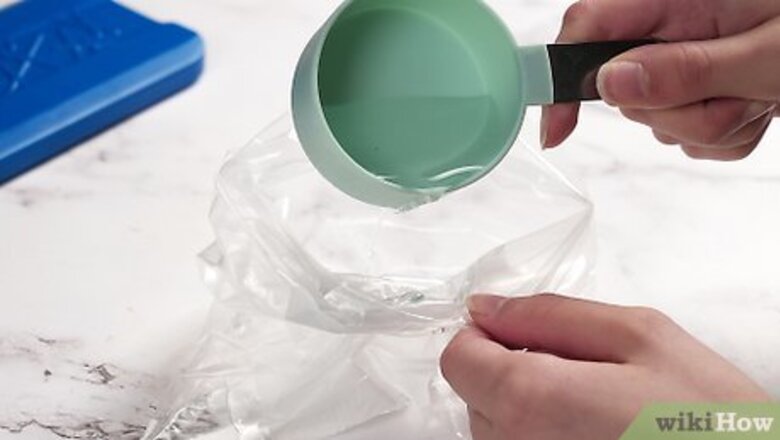
views
X
Trustworthy Source
Cleveland Clinic
Educational website from one of the world's leading hospitals
Go to source
Luckily, it’s super easy to make your own flexible, gel ice pack out of household items like rubbing alcohol and dish soap. Read on to learn how to make several types of homemade ice packs as well as a soothing moist heat pack!
- Pour 2 parts water and 1 part rubbing alcohol into a plastic freezer bag and freeze it for 1-2 hours.
- Or, fill a freezer bag with dish soap or corn syrup or 2 c (473 ml) of water and 2 tbsp (34 g) of salt. Freeze the bag for 2-3 hours.
- Wrap the ice pack in a towel. Then, ice your injury for 20 minutes on, 20 minutes off.
Ice Pack with Rubbing Alcohol
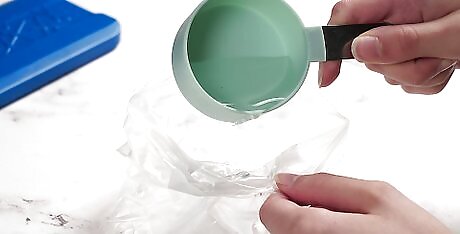
Fill a freezer bag with 2 parts water and 1 part rubbing alcohol. Pour in the water and rubbing alcohol until the bag is ¾ full. Then, remove the excess air. Seal the bag in a second freezer bag to prevent any leaks. Then, freeze it for 1 to 2 hours.Because the water and alcohol have different freezing points, the solution develops into a flexible gel consistency and will mold to your body. Use the bag size (sandwich, quart, or gallon) that works best for you. You can even add a few drops of food coloring to customize your ice pack.
Dish Soap Ice Pack

Pour liquid dish soap into a plastic freezer bag. Just fill the bag about ¾ full, squeeze out the excess air, and close the bag. Then, seal the bag inside another freezer bag and freeze it for 2 to 3 hours. Dish soap has a gel-like consistency when frozen, helping this ice pack form to your body. For a more solid consistency, fill the bag with 1 part dish soap and 2 parts water.
Corn Syrup Ice Pack

Fill a plastic freezer bag with corn syrup. Then, remove the excess air and seal the bag. Place the bag inside a second freezer bag to prevent leaks and stick it in the freezer for 2 to 3 hours. Corn syrup stays flexible when it’s frozen and easily molds to hard-to-reach areas like your ankle, knee, or wrist. Use any size bag that works for you.
Rice Ice Pack

Fill a sock or pillowcase ¾ full with uncooked rice. Either sew the pouch closed or secure it with a twist tie or rubber band. Simply place it in the freezer for 2 to 3 hours to get cold. Rice stays as cold as ice when frozen but doesn’t melt. Plus, the individual grains let this ice pack mold to your injury.Use oatmeal, flaxseed, buckwheat, or dried beans if you don’t have rice.Add a few drops of your favorite essential oil to help you relax as you ice. For instance, add a few drops of lavender or chamomile essential oil.
Salt Ice Pack

Pour 2 c (473 ml) of water and 2 tbsp (34 g) of salt into a freezer bag. Just remove the air in the bag and seal it inside a second bag. Then, freeze it for 2 to 3 hours. Adding salt to water lowers the water’s freezing point, giving this ice pack a gel-like feel.
Sponge Ice Pack
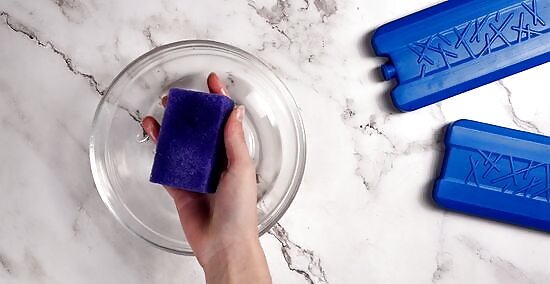
Soak a clean, soft sponge in water and put it in a freezer bag. Just wring out the sponge so it’s not sopping wet, put it in a plastic bag, and remove the excess air. Then, freeze the sponge for 2 to 3 hours. Sponges stay firm when frozen, making this ice pack perfect for icing a stiff joint like a shoulder or elbow. Let the sponge thaw for several minutes if you want it to be flexible and mold better to your body.
Using the Ice Pack
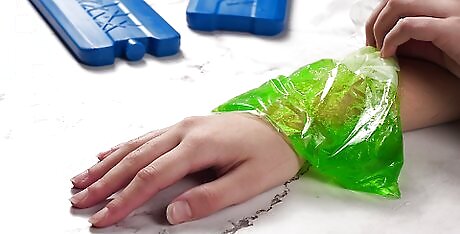
Wrap the ice pack in a towel and ice your injury for 20 minutes. Protect your skin from the freezing temperatures by covering the ice pack in thick fabric. Then, apply the ice pack to the injured area for 10 to 20 minutes. Just wait at least 20 minutes before icing the area again.It’s best to ice your injury in the first 6 weeks of receiving it instead of heating it. Ice limits blood flow which helps relieve pain, inflammation, and bruising.
Moist Heat Pack
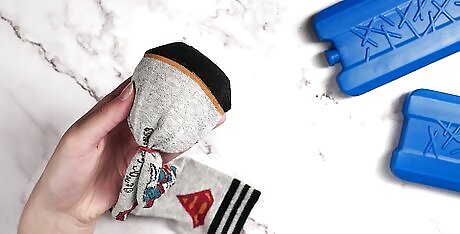
Pour rice in a sock and microwave it in 30-second increments. Rice holds heat well, making it a great, long-lasting heat pack. Just fill a sock or pillowcase ¾ full with uncooked rice. Sew or tie the sock shut. Then, heat it in the microwave for 1 to 3 minutes. Press the heat pack against your injury for 15 to 20 minutes. Heat helps increase blood flow to the area to relax it and reduce pain. Wait at least 20 minutes before heating the injured area again. Use oatmeal, flaxseed, or buckwheat as an alternative to rice. Add several drops of essential oil to the rice for an aromatherapy boost.Touch the sock as you’re heating it to ensure it’s comfortably hot but not scalding. If necessary, let it sit for several minutes to cool down. Or, wrap the pack in a towel to dull the heat.


















Comments
0 comment